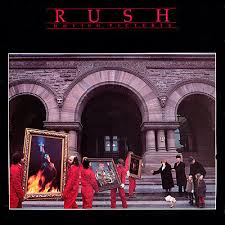20 Rush Albums in 20 Days: Rush
 DAY SIX: Rush, self-titled debut, running time 40:07, released March 1, 1974
DAY SIX: Rush, self-titled debut, running time 40:07, released March 1, 1974
It’s hard to imagine how the album Rush would be remembered today were it not for the forty years that followed. Listening to it now, there are little glimpses of what the band would become, and to separate these songs from the band’s overall legacy is difficult, but this afternoon I attempted to enjoy the album on its own terms, and you know what? I really liked it. I actually think that as a total package, it’s a superior product to Fly By Night (which I listened to last week). However, it aims lower – much lower – than any of their subsequent efforts, and in retrospect it’s easy to see that on the next couple of albums the band needed to find its footing and stumble a few times in order for albums like 2112 and A Farewell to Kings to transpire. For their debut album, all they needed to do was create good, rocking, blues-based songs, and they succeeded big-time.
I noticed a few things while listening to this album:
1) John Rutsey’s drumming is very capable, and your average 70s rock band would have been happy to have him laying down their rock grooves. This surprised me a bit.
2) Geddy actually sings in a lower register more frequently on this album than he does on the next several, and it sounds good. If you ever listen to the live version of “Working Man” from All The Worlds A Stage, you’ll notice that Geddy raises the pitch of the verses way, way up. I like the studio version better, with a discernible melody in a lower register.
3) Alex Lifeson was all of twenty years old while recording this album, and so much of what he does is melodic and tasteful. He allows his solos to breathe, something seasoned professionals often fail to do.
4) Rush employed extensive use of doubling lead vocals and, on occasion, lead guitar, a technique that worked very well to create a fuller sound.
Sure, the lyrics on most of these tunes are silly, but what do you expect from teenagers? There are great riffs (“Finding My Way,” “What You’re Doing”), refreshingly positive messages from a blues-rock band (“Take a Friend”) and a little foretaste of more ambitious efforts (“Before and After” and “Working Man.”). Comparing this album to other rock bands of the 70s, Rush is better than anything Kiss ever produced (IMO), and better than bands like Foghat, Head East and Ted Nugent. It doesn’t reach the heights of, say, Van Halen’s or Boston’s debut album, but still, an honest and impressive album for a bunch of 20 year-olds.
Comparing this album to Fly by Night or Caress of Steel is almost ridiculous. Those albums aimed very high and missed a bit. This album aims straight on and, to my ears, hits the mark. It’s like comparing a Will Ferrell movie to a poor film by Scorsese. Still, that’s exactly what I’ll be doing in thirteen days.
Tomorrow, I’ll be listening to…drum roll, please…number 15! Fast-forward nineteen years to the album Counterparts, an oft-overlooked effort (except for my local college radio station that plays it incessantly!). Off we go…



